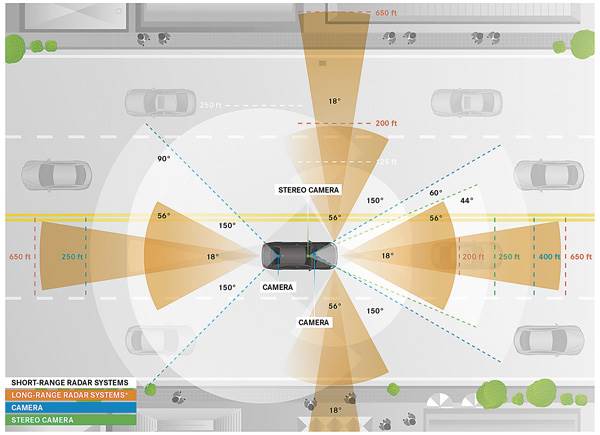
Restrictions on automotive radar tech may be lifted
The Minister of Transport is in favour of lifting the ban and this will open up options for a host of next-gen driver assists.
Published On Feb 03, 2015 11:33:00 AM
41,350 Views
Follow us onEXCLUSIVE!
The Indian government may consider de-licensing the frequency spectrums necessary for radar-based automotive technologies. At the recently held Bloomberg TV-Autocar India Awards 2015, Eberhard Kern, MD and CEO, Mercedes-Benz India, spoke with Nitin Gadkari, the Union Government Minister of Transport, regarding de-licensing the spectrum commonly used by automotive short range radar systems (SSRS) in high-tech cars. SSRS are used for a host of advanced driver assists and help improve road safety.
“I will take up this issue personally, especially if it enhances road safety,” said Gadkari during their interaction. The minister’s positive reaction is likely to result in swift action resulting in manufacturers bringing cars with advanced driver assists and maybe even self-driving cars, sooner; potentially reducing the chaotic traffic conditions prevalent in India.
Most automotive Short Range Radars (SRR) use frequency spectrums ranging from 24-26.65GHz and 76-81GHz to interact with their surroundings. In India, the spectrums of 24, 76 and 79GHz are reserved and regulated by the Department of Telecommunications, which restricts manufacturers from equipping their cars with these technologies. Continued..
Detecting and reacting appropriately to impending collisions gives SRR-equipped cars the ability to reduce road accidents — something we desperately need. And apart from safety, even comfort-oriented features such as Mercedes’ Magic Body Control (a feature the carmaker had to drop for the Indian S-class), depends on radar-based tech.
When paired with sophisticated mechatronic systems in a car, it can steer the vehicle away from a possible accident, slam on the brakes if necessary or do both – making it a key component in many active safety technologies. Also, radars are much better than cameras at ‘seeing’ through bad weather, and can help drivers spot pedestrians or other motorists from a greater distance.
The industry is hopeful that the government will take swift action, because advanced driver assists are getting increasingly popular around the world and it won’t be long before they find their way into affordable, mainstream cars. After all, it didn’t take long for the once-high-tech ABS and airbags to feature on our budget hatchbacks. And in view of India’s dismal road safety record, technologies that can prevent accidents and enable safer motoring cannot afford to face hurdles in its implementation.

Copyright (c) Autocar India. All rights reserved.




Comments
Member Login
Personal Details
No comments yet. Be the first to comment.